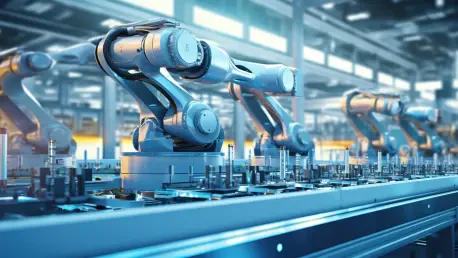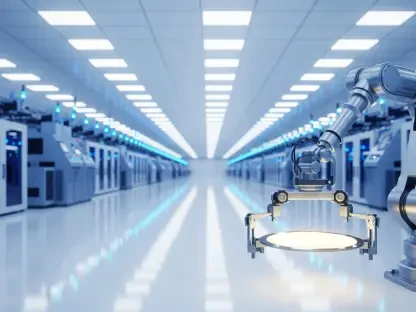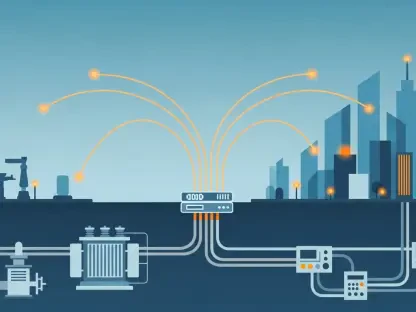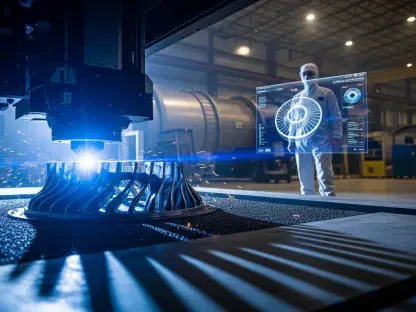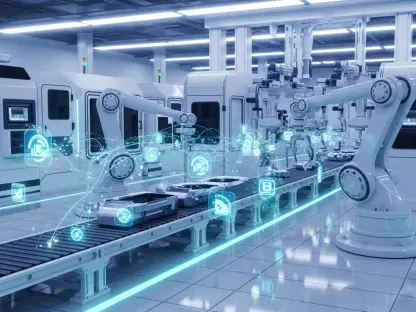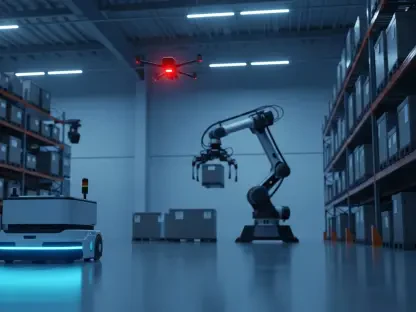In recent years, the manufacturing landscape has been undergoing a remarkable transformation powered by artificial intelligence (AI) and collaborative robots, commonly known as cobots. Unlike their predecessors, these intelligent machines are purposefully engineered to operate alongside human workers, rather than replacing them. As advancements in AI continue to reshape the capabilities of cobots, assembly lines are becoming more adaptive, efficient, and safe. These areas of synergy between human ingenuity and robotic precision foster innovative development, thereby setting new benchmarks in productivity within modern manufacturing processes. By harnessing enhanced situational awareness and the ability to make real-time decisions, cobots are facilitating an era of collaboration that profoundly changes the dynamics of assembly line operations.
Integration of AI in Cobots
Cobots represent a distinct evolution in the automation paradigm, acting as facilitators of human and machine collaboration in manufacturing settings. With a design focused on human partnership, these robots can function safely in environments shared with human workers. Their compact nature, coupled with affordable pricing and user-friendly programming, makes them particularly appealing to a wide range of manufacturers—from smaller enterprises to multinational corporations with intricate production demands. Modern cobots integrate sophisticated AI techniques, endowing them with capabilities that enhance situational awareness and decision-making processes. These AI enhancements allow cobots to tackle complex tasks that demand precision, dexterity, and adaptability.
AI’s transformative impact on cobots is notably visible in their increased ability to perceive and analyze events around them. Through AI-powered vision systems, cobots can identify objects, differentiate between components, and execute intricate tasks such as assembling small parts or sorting items with precision. Furthermore, adaptive learning capabilities enable cobots to improve based on experiences gained over time, addressing challenges presented by non-standard tasks and frequent task changes. In industries embracing mass customization, the ability of cobots to swiftly adapt to new tasks is crucial for maintaining efficiency. Overall, AI integration is helping cobots excel in dynamic environments like automotive assembly, where quick, corrective decisions ensure smooth workflow and minimal error rates.
Human-Cobot Interaction Enhancement
As AI continues to evolve, human-cobot collaboration is benefiting from improvements in natural language processing (NLP) and gesture recognition technologies. These advancements allow cobots to interact with human workers using intuitive methods like voice commands or hand gestures. Such human-friendly communication makes cobots more accessible to workers regardless of their technical expertise. By providing intuitive interaction methods, cobots enhance the ease of operation and efficiency in tasks that require human input. In sectors where manual labor involves intricate details and complexity, cobots serve as valuable partners—freeing human workers from monotonous responsibilities and enabling them to focus on tasks requiring human intuition and strategic thinking.
The integration of NLP and gesture recognition streamlines operations on assembly lines by optimizing coordination between human workers and cobots. Effective communication enables human workers to guide cobots in performing complex procedures without needing extensive technical training, thereby accelerating manufacturing processes and reducing downtime. This synergy not only boosts productivity but also enhances the safety of operations, as human workers can easily instruct cobots to halt activities when necessary. As cobots integrate deeper into assembly lines, their intuitive interface ensures a seamless transition between human-led tasks and automated precision, reinforcing teamwork across the workforce steering modern manufacturing.
Industry-Wide Applications and Impact
The versatility of AI-powered cobots has sparked transformations across industries by enhancing precision and adaptability in manufacturing processes. In the automotive industry, cobots assist in streamlining operations, such as component assembly and quality inspection, thereby ensuring consistency in product quality. With heightened accuracy, they execute tasks that require detailed precision, improving assembly line workflow and reducing production errors. Electronics manufacturers, too, are benefiting from cobots in intricate procedures like printed circuit board (PCB) assembly and soldering, where reliability and precision are crucial. By managing tasks that involve minute components, cobots alleviate human burden, as they deliver accuracy and dependability.
Similarly, cobots are bringing new efficiencies to the food and beverage industry, where they perform packaging, sorting, and quality control duties effortlessly. Their ability to adjust to fluctuations in product characteristics ensures minimal risk and enhanced output—irrespective of variations in production. In fields like healthcare and pharmaceuticals, cobots support the assembly of medical devices and packaging drugs, allowing skilled personnel to devote their attention to more sophisticated roles. The dynamic nature of cobots has further accelerated logistics in e-commerce and warehousing sectors, where they streamline order management and packaging operations, boosting fulfillment speed and efficiency. Through these cross-industry applications, AI-powered cobots continually prove their capacity to modify processes for greater effectiveness, expanding operational possibilities across varied domains.
Overcoming Challenges in Integration
While the benefits of AI-enhanced cobots are extensive, manufacturers often face notable challenges in effectively integrating them into assembly lines. One primary concern revolves around the complexity inherent in data management. AI training and adaptive learning hinge on the availability and accuracy of high-quality data, making data relevance critical. The compatibility of cobots with legacy systems can further present challenges upon initial integration. Ensuring conformity between cobots and existing assembly line setups requires thoughtful processes, addressing any integration roadblocks. Moreover, setting up AI capabilities involves considerable upfront investments; strategic planning is essential to ensure a favorable return on investment.
For human workers collaborating with cobots, comprehensive training is fundamental to adjusting to cobot-centered environments, particularly in industries with limited tech literacy. Preparing the workforce to effectively interact with advanced AI-powered robots greatly affects overall efficiency. Alongside training, organizational culture must evolve to embrace technological integrations collectively. Building trust within the workforce regarding cobot reliability strengthens cooperative efforts between man and machine. Addressing these challenges involves the ongoing provision of comprehensive education for human workers about cobot capabilities to facilitate a smooth integration. Overall, overcoming these challenges factors significantly in maximizing how cobots contribute positively to assembly line dynamics, ensuring adoption yields substantial returns on investment.
Future Trends and Potential Developments
As cobots continue to evolve through AI advancements, various emerging trends promise to advance their capabilities further, enhancing efficacy across assembly lines. One evident development involves edge computing—which reduces latency and bolsters real-time decision-making processes—providing opportunities for cobots to conduct operations with increased precision. The advent of 5G connectivity presents possibilities for more cohesive coordination, especially in expansive manufacturing facilities where synchronized operations are vital. Emotional AI, capable of gauging workplace satisfaction, could lead to more harmonious environments where cobots adapt to maximize human comfort and satisfaction during collaboration. Another prospective advancement involves digital twins simulating assembly line processes, allowing manufacturers to refine operations before implementing physical changes.
AI-driven predictive maintenance offers solutions for extending cobots’ operational lifespan, minimizing downtime, and optimizing cost-effectiveness through proper planning. Evolving capabilities support cobots in refining assembly lines incrementally, maximizing efficiency and productivity sustainably. Industries aiming to remain at the forefront of technological integration must continue embracing the collaborative potential presented by AI-driven cobots to withstand market shifts. Pioneering organizations will benefit from understanding possibilities offered by AI and leveraging cobots strategically to remain competitive, enabling innovation and adaptability in dynamic markets.
Conclusion: Embracing the Future
Cobots, or collaborative robots, are a significant innovation in the world of automation, designed to enable seamless collaboration between humans and machines, particularly in manufacturing environments. These robots are engineered to work safely alongside human workers, making them a versatile tool for various manufacturing settings. Their compact design, coupled with affordability and ease of programming, makes cobots attractive to a diverse range of manufacturers, from small businesses to large multinational corporations dealing with complex production needs. The infusion of advanced AI technology has further enhanced cobots’ capabilities, allowing them to improve situational awareness and decision-making.
AI has revolutionized cobots, notably improving their perception and analytical abilities. Through cutting-edge AI-powered vision systems, cobots can identify objects, distinguish between different components, and perform complex tasks like assembling small parts or sorting with precision. Moreover, cobots possess adaptive learning, enabling them to refine their skills based on past experiences, tackling non-standard tasks with ease. In industries that emphasize mass customization, the ability of cobots to quickly adapt to new tasks is vital for maintaining productivity. Overall, the integration of AI allows cobots to perform efficiently in dynamic settings, such as automotive assembly, where swift and accurate decisions are crucial for ensuring smooth operations and minimizing errors.
